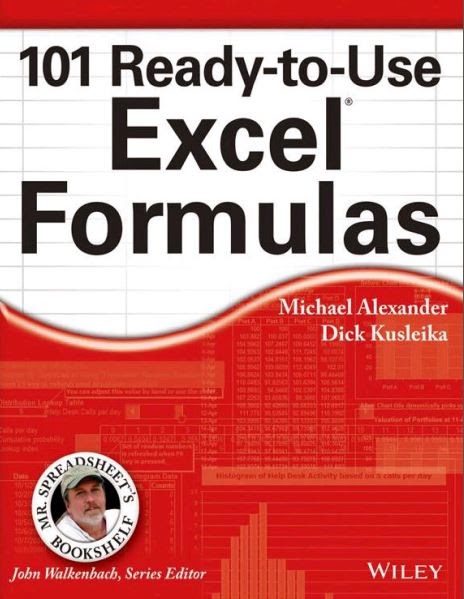About Book
Formulas are the true engines of Excel. Employing various Excel functions, formulas enable Excel analysts to create aggregated reporting, complex calculation engines, clever dashboard models, and much more. Indeed, Excel analysts become more productive as their proficiency with Excel functions and formulas improves. But building proficiency with Excel functions and formulas takes time. Given that Excel contains more than 400 functions, you could spend months, even years, learning
which functions are best for certain tasks and which functions can be combined with others unctions. Unfortunately, many analysts don’t have the luxury of taking a few weeks’ time-out to learn all they need to know about Excel functions and formulas. The scenarios and issues they face require solutions now. This is where 101 Ready-to-Use Excel Formulas comes in. This book approaches Excel formulas with the assumption that “learning” comes with accomplishing core
tasks. Instead of offering the usual general overview of Excel formula writing, this book provides 101 of the most commonly used, real-world Excel formulas. For each formula covered, we outline a common problem that needs to be solved and provide the actual Excel formula to solve the problem, along with detailed explanations of how the formula works. This approach lets you use this book as a
handy reference for finding a formula that solves a common problem. After reading about a given formula, you should be able to Immediately implement the needed Excel formula Understand how the formula works Reuse the formula in other workbooks
How This Book Is Organized
We've grouped this book into nine chapters that are chock-full of tips, techniques, andformulas dedicated to a particular topic.
Chapter 1: Introducing Excel Formulas
Chapter 1 serves as an introduction to Excel formulas, giving you an understanding of how Excel formulas work and some of the ground rules for working with formulas.
Chapter 2: Common Mathematical Operations
In Chapter 2, you gain insight into some of the fundamental mathematical operations every Excel analyst should know. The formulas found here serve as the foundation for all kinds of advanced data analysis.
Chapter 3: Manipulating Text with Formulas
Chapter 3 focuses on the transformation and shaping of text strings. In this chapter, you explore some of the common text transformation exercises an Excel analyst performs, and in the process, you get a feel for many of the text-based functions Excel has to offer.
Chapter 4: Working with Dates and Times
Chapter 4 gives you a solid understanding of how Excel handles time-based data. Through the prism of the most commonly used date formulas, you discover how to more effectively utilize the dates and times within your data sets.
Chapter 5: Performing Conditional Analysis
In Chapter 5, you take a look at a wide array of conditional analysis formulas that add flexibility to your analytical processes. With the formulas found here, you’ll be able to save time, organize your analytical processes, and enhance your data-crunching power.
Chapter 6: Using Lookup Formulas
Chapter 6 focuses on Excel’s powerful, sometimes intimidating, Lookup formula. The formulas demonstrated in this chapter provide the foundation you need to add depth and power to your Excel data models.
Chapter 7: Common Business and Financial Formulas
Chapter 7 demonstrates a host of business and financial formulas that leverage Excel’s flexible spreadsheet environment to create key business and financial metrics used in virtually every industry.
Chapter 8: Common Statistical Analysis
Chapter 8 takes you beyond simple mathematical operation and into the realm of statistical analysis. With the help of the formulas found here, you quickly get up to speed on fundamental statistical concepts, even if you've never taken a course in statistics.
Chapter 9: Using Formulas with Conditional Formatting
Chapter 9 rounds out the book’s 101 formulas with a look at how you can leverage formulas to enhance conditional formatting. Here, you take in a few examples of how integrating your own custom formulas can help add a visual layer to your data analysis.



0 comments :
Post a Comment